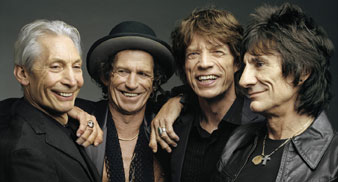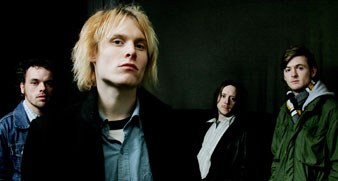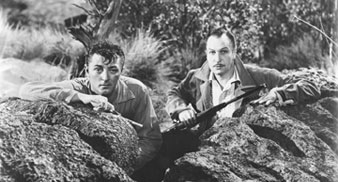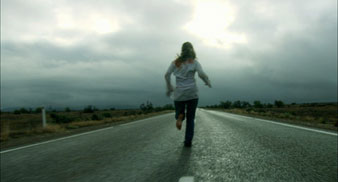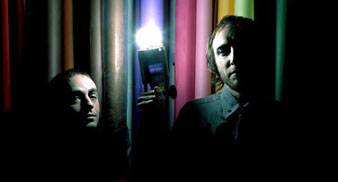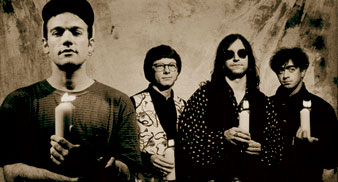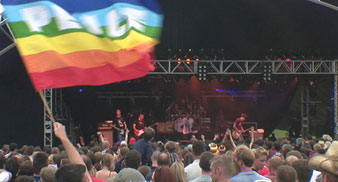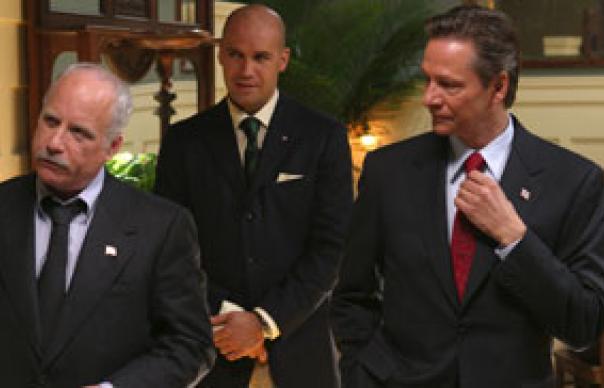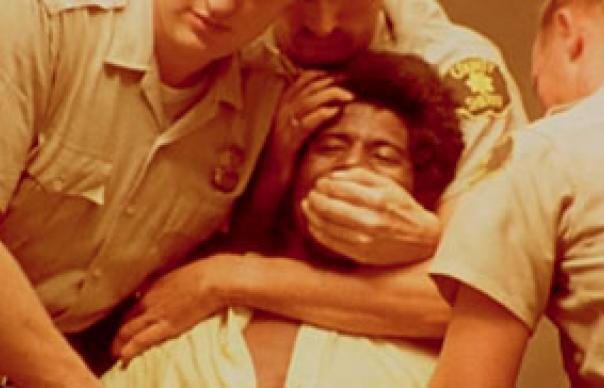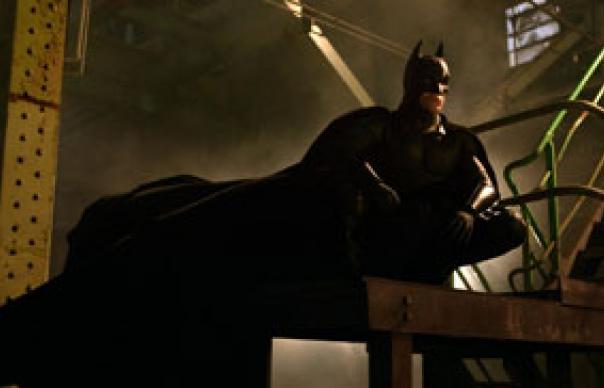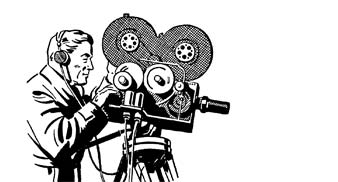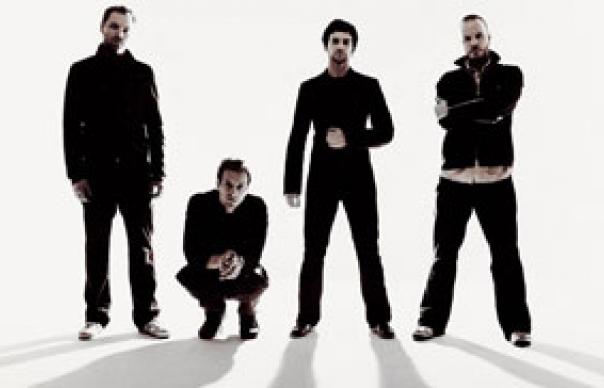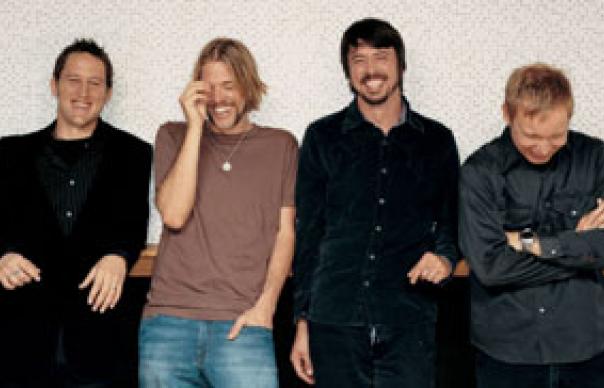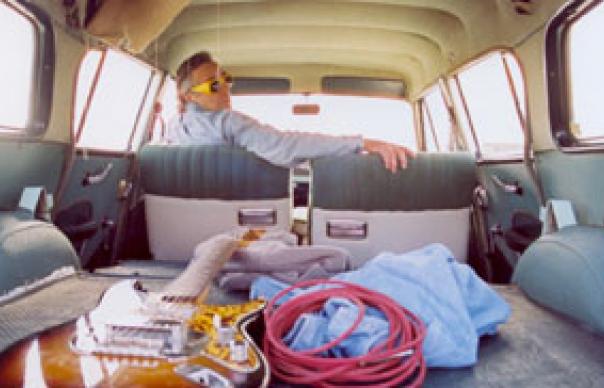They may still be the greatest live rock'n'roll band in the world, but nobody expects much from a new Rolling Stones studio album these days. Indeed, it's eight years since the last one - 1997's Bridges To Babylon - and after the four patchy new tracks that appeared on 2002's Forty Licks compilation, they would never make get around to making another studio record. Yet when Uncut suggested to Mick Jagger at the end of 2003 that the Stones had become a touring-only band like The Grateful Dead towards the end of their career, it was clear that his pride was wounded by the suggestion. "No, I think the Stones have to make another studio album," he insisted. Now finally they've gone and done it with 'A Bigger Bang', a title which apparently reflects their "Fascination with the scientific theory about the origin of the universe." A notion which raises intriguing images of Mick, Keith, Charlie and Ronnie sitting around the studio reading Stephen Hawking for inspiration. Co-produced by Don Was and the band, the album was recorded in sessions in Paris at the end of 2004 and spring/early summer this year and mixed in Los Angeles. It contains 16 new Jagger-Richards compositions, which length-wise at least, puts the album in the bracket of Exile On Main Street (18 tracks) rather than Let It Bleed (nine tracks) or Beggar's Banquet and Sticky Fingers (10 tracks). What's more, it is surely their last studio album. Given the long gaps between albums these days, the Stones will be in their 70s before another is due. So there might be a couple more tours but there surely won't be another studio record. Early indications suggest that with this is mind, the Stones have defied the odds and raised their game to produce one last great album. There's none of the trendy fripperies that characterised Jagger's last solo album 'Goddess In The Doorway', no programming or borrowing from dance music or any other modern passing fad or fashion. As one Stones' employee puts it, 'They decided to borrow from themselves instead'. For the first time in years, sources say, Jagger and Richards wrote in tandem and the result is the most organic-sounding album they've made in decades. Due for release on September 5, this is what Uncut has been able to piece together about an album that might be subtitled 'How The Glimmer Twins Got Their Groove Back'... Rough Justice A kick-ass rocker, full of animal imagery about roosters, chickens, cocks, foxes and even a bat out of hell. At one point, Mick sings "put your lips to my hips and tell me what's on your mind". Let Me Slow Down One of the best tune on the record, with a great femme fatale lyric ("there's a swish in your step and a gleam in your eye") and a dramatic chorus with a lovely descending melody, "I said baby, baby, baby, let me down real slow.'' It Won't Take Long Classic "Heart Of Stone" style Mick put-down lyrics as he tells the girl he'll soon forget her, accompanied by great dual guitar work form Keith and Ronnie. Rain Fell Down A touch of New Orleans funk and a circular, clanging Meters-style guitar motif from Keith. Chugs along rather like Dylan's "Slow Train Coming". Streets Of Love Starts with mock-Renaissance guitar chords, like "Lady Jane" or "Tears Go By", and builds into a big stadium ballad, with Mick deliciously mouthing lyrics about stalking the streets of love and confessing ''I must admit I was awful bad. . .'' The Back Of My Hand Raw and dirty blues, fantastic slide guitar, wailing harmonica, Mick yelping like a cat on heat. The ghost Of Muddy Waters walks. This Place Is Empty Great piano-led ballad sung by Keith but very rootsy. Real honky-tonk-style tack piano and Keith crooning ''treat me sweet and cruel". She Saw Me Coming Mick on the prowl again - only this time his prey was wise to the old predator's tricks. Biggest Mistake Mick admits to making an error? Surely some mistake. Needless to say there's a girl at the bottom of it... Oh No, Not You Again Storming Sticky Fingers-era rocker with a lyric about ''Oh no not you again, fuckin' up my life...'' previewed in the band's surprise live set on the balcony of New York's Juilliard School when they announced their new tour in May. Dangerous Beauty Mid-tempo track on which Mick explains how he could always resist everything but temptation. Laugh I Nearly Died A simmering mid-tempo groove with Mick sounding more impassioned than in years - "Been travelling far and wide, wondering who's gonna be my guide... I'm so sick and tired... I feel so despised... Laugh? Laugh? Laugh? I nearly died." Sweet Neo Con The biggest surprise. We thought Mick was an old Thatcherite. But here he sticks it to Bush and co right between the eyes. ''You say you are a Christian , I think you are a hypocrite,'' he spits in the opening line to a tune a little like Dylan's "Masters Of War", while the chorus sneers, ''How come you're so wrong, my sweet neo-con.'' A Virgin spokeswoman in the US has already put out a panicky statement denying it's about Bush or anyone on the White House (can't risk upsetting Clear Channel, can we?). But if you believe that, you'll believe anything. Look What The Cat Dragged In Another rocker with a classic riff and typical Jagger lyric. Driving Too Fast Keith in overdrive on a pounding riff that rocks like its 1971. Infamy The album ends with Keith stepping up to the mic again for his second wasted-sounding vocal of the album.
They may still be the greatest live rock’n’roll band in the world, but nobody expects much from a new Rolling Stones studio album these days. Indeed, it’s eight years since the last one – 1997’s Bridges To Babylon – and after the four patchy new tracks that appeared on 2002’s Forty Licks compilation, they would never make get around to making another studio record.
Yet when Uncut suggested to Mick Jagger at the end of 2003 that the Stones had become a touring-only band like The Grateful Dead towards the end of their career, it was clear that his pride was wounded by the suggestion. “No, I think the Stones have to make another studio album,” he insisted.
Now finally they’ve gone and done it with ‘A Bigger Bang’, a title which apparently reflects their “Fascination with the scientific theory about the origin of the universe.” A notion which raises intriguing images of Mick, Keith, Charlie and Ronnie sitting around the studio reading Stephen Hawking for inspiration.
Co-produced by Don Was and the band, the album was recorded in sessions in Paris at the end of 2004 and spring/early summer this year and mixed in Los Angeles. It contains 16 new Jagger-Richards compositions, which length-wise at least, puts the album in the bracket of Exile On Main Street (18 tracks) rather than Let It Bleed (nine tracks) or Beggar’s Banquet and Sticky Fingers (10 tracks).
What’s more, it is surely their last studio album. Given the long gaps between albums these days, the Stones will be in their 70s before another is due. So there might be a couple more tours but there surely won’t be another studio record.
Early indications suggest that with this is mind, the Stones have defied the odds and raised their game to produce one last great album. There’s none of the trendy fripperies that characterised Jagger’s last solo album ‘Goddess In The Doorway’, no programming or borrowing from dance music or any other modern passing fad or fashion. As one Stones’ employee puts it, ‘They decided to borrow from themselves instead’. For the first time in years, sources say, Jagger and Richards wrote in tandem and the result is the most organic-sounding album they’ve made in decades.
Due for release on September 5, this is what Uncut has been able to piece together about an album that might be subtitled ‘How The Glimmer Twins Got Their Groove Back’…
Rough Justice
A kick-ass rocker, full of animal imagery about roosters, chickens, cocks,
foxes and even a bat out of hell. At one point, Mick sings “put your lips
to my hips and tell me what’s on your mind”.
Let Me Slow Down
One of the best tune on the record, with a great femme fatale lyric
(“there’s a swish in your step and a gleam in your eye”) and a dramatic
chorus with a lovely descending melody, “I said baby, baby, baby, let me
down real slow.”
It Won’t Take Long
Classic “Heart Of Stone” style Mick put-down lyrics as he tells the girl
he’ll soon forget her, accompanied by great dual guitar work form Keith
and Ronnie.
Rain Fell Down
A touch of New Orleans funk and a circular, clanging Meters-style guitar
motif from Keith. Chugs along rather like Dylan’s “Slow Train Coming”.
Streets Of Love
Starts with mock-Renaissance guitar chords, like “Lady Jane” or “Tears Go By”, and builds into a big stadium ballad, with Mick deliciously mouthing lyrics about stalking the streets of love and confessing ”I must admit I was
awful bad. . .”
The Back Of My Hand
Raw and dirty blues, fantastic slide guitar, wailing harmonica, Mick yelping like a cat on heat. The ghost Of Muddy Waters walks.
This Place Is Empty
Great piano-led ballad sung by Keith but very rootsy. Real honky-tonk-style
tack piano and Keith crooning ”treat me sweet and cruel”.
She Saw Me Coming
Mick on the prowl again – only this time his prey was wise to the old
predator’s tricks.
Biggest Mistake
Mick admits to making an error? Surely some mistake. Needless to say
there’s a girl at the bottom of it…
Oh No, Not You Again
Storming Sticky Fingers-era rocker with a lyric about ”Oh no not you again, fuckin’ up my life…” previewed in the band’s surprise live set on the balcony of New York’s Juilliard School when they announced their new tour in May.
Dangerous Beauty
Mid-tempo track on which Mick explains how he could always resist everything but temptation.
Laugh I Nearly Died
A simmering mid-tempo groove with Mick sounding more impassioned than in years – “Been travelling far and wide, wondering who’s gonna be my guide… I’m so sick and tired… I feel so despised… Laugh? Laugh? Laugh? I nearly died.”
Sweet Neo Con
The biggest surprise. We thought Mick was an old Thatcherite. But here he
sticks it to Bush and co right between the eyes. ”You say you are a Christian , I think you are a hypocrite,” he spits in the opening line to a tune a little like Dylan’s “Masters Of War”, while the chorus sneers, ”How come you’re so wrong, my sweet neo-con.” A Virgin spokeswoman in the US has already put out a panicky statement denying it’s about Bush or anyone on the White House (can’t risk upsetting Clear Channel, can we?). But if you believe that, you’ll believe anything.
Look What The Cat Dragged In
Another rocker with a classic riff and typical Jagger lyric.
Driving Too Fast
Keith in overdrive on a pounding riff that rocks like its 1971.
Infamy
The album ends with Keith stepping up to the mic again for his second wasted-sounding vocal of the album.


